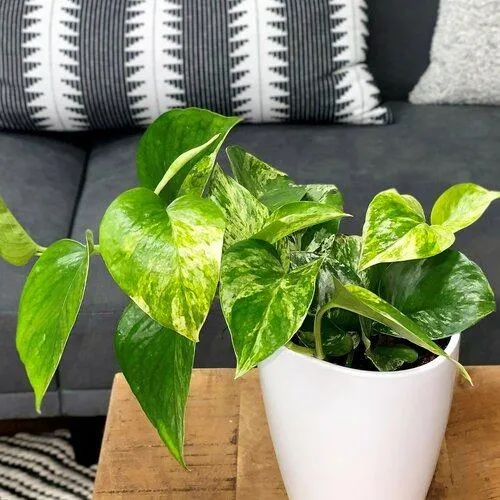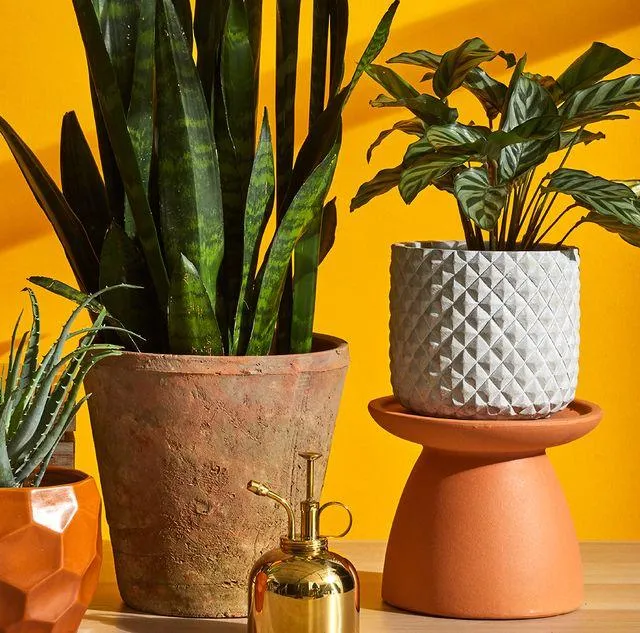The Best Hanging House Plants to Beautify Your Home
If you’re looking to add some greenery to your indoor spaces but don’t have much room on the floors, hanging house plants are the way to go. They offer a creative way to maximize your plant display while taking up minimal floor space. In this article, I’ll discuss some of the top options for hanging plants and provide tips on caring for them based on my years of experience as an avid plant parent.
Pothos
- Pothos, aka devil’s ivy, is basically the hardest houseplant to kill. It thrives in low to medium light and tolerates neglect like nobody’s business. I’ve seen pothos survive some crazy stuff, man. From my experience, as long as you don’t totally forget to water it, this plant will hang in there.
- Pothos comes in several attractive leaf color variations like neon, marble queen, and golden. The trailing vines give it a full, lush appearance. You can hang a single plant or cluster multiple vines for a more dramatic look. Pothos makes for a super low maintenance choice.
Philodendron
Philodendron is sort of like the fancier cousin of pothos. While pothos has heart-shaped leaves, philodendron leaves come in varieties with holes, splits, or colorful patterns. Some top philodendron types for hanging include:
- – Brazilian philodendron has beautiful leaves with natural holes. It thrives in medium to low light. I’ve found this plant very forgiving of the occasional dry spell between waterings.
- – Purple heart philodendron has velvety dark green leaves rimmed in burgundy. It kind of looks like it’s wearing eye shadow, if you think about it! This one prefers brighter indirect light.
- – Monstera deliciosa, or Swiss cheese plant, is more challenging but so stunning with its huge, fenestrated leaves. It needs ample humidity and sunlight to reach its full glory. If you’re up for the task, this showstopper will totally outweigh your effort.
Spider Plants
Spider plants are wonderfully eccentric dudes. Their long, grassy fronds spill out babies at the ends of stemlets called plantlets. You can remove these plantlets to propagate new spider plants or leave them dangling for an artsy boho effect. Spider plants enjoy medium to bright light and thrive on neglect. They’re so forgiving of indoor conditions that they were sent to astronauts in space! Their hardiness and whimsical appeal make spider plants a sort of icon among hanging house plants.
As for care, water weekly or when the soil mostly dries. Hang baskets high enough that the fronds won’t coil or drag on surfaces below. Repot in spring if roots emerge from the drainage holes or the plant seems pot bound. Give them half-strength water-soluble fertilizer monthly during growth periods.

Overall, the great thing about these hanging plants is that they provide lush greenery without taking up precious floor real estate. You can find decorative plant hangers at stores or get creative with macrame hangers, twine, or hooks. Try grouping assorted vining plants together for maximum visual impact. Who knows, maybe adding some hanging foliage will inspire you to spruce up the rest of your place kinda like those home renovation shows but way more affordable, lol.
English Ivy
If you’re looking for a really filling trailing plant, English ivy may be the way to go. This elegant evergreen vine thrives in medium to low indirect light. Perhaps you’ve seen it cascading down walls outdoors in cooler zones—well, it also makes a superb hanging houseplant. English ivy grows super fast to form dense mats of dark green 3-lobed leaves.
Its vigorous habit definitely requires pruning to contain it within a pot or hanging basket. When hanging it, make sure to secure the vines well or use a heavy pot to keep it from pulling itself down. English ivy may become leggy if light is too low, so rotate it occasionally for even growth. Other than that, ivy is quite hardy and adaptable indoors. It even removes toxins from the air, if you believe the research! In my opinion, ivy offers phenomenal covering power in a hanging planter.
Ferns
There are many excellent hanging ferns to choose from as well. Some top varieties include:

- – Boston ferns have lovely lacy fronds perfect for a cascading effect. They like humid conditions and medium light.
- – Bird’s nest ferns (Asplenium nidus) have cute rounded fronds that form nest-like clusters. They appreciate high humidity and tolerate low light fairly well. These guys look super cool bundled together in macrame hangers.
- – Dollarweed ferns (Microgram favolosissima) are delicate miniature ferns that resemble shaggy moss. Their subtle colors brighten shady spots. Like most ferns, they need high moisture to keep their fragile fronds healthy.
In general, ferns can be finicky but thrive with frequent misting. Rotating their position encourages even growth. Watch for signs of crispy fronds which may indicate too much sun or dry air. Hanging baskets allow airflow around the foliage and helps prevent issues. With TLC, ferns make a wonderful touch of foliage in hanging planters.
So in summary, hanging plants are a clever way to beautify homes without taking precious floor space. By choosing from low maintenance trailers like pothos or ivy, or investing more care into showier plants, you’re sure to find the perfect hanging greenery to suit your style and lifestyle. As an avid plant collector, I hope these tips inspire you to try dangling some living decor from your walls and ceilings—but maybe don’t go too overboard unless you want a jungle vibe up in here! Let me know if you have any other planty questions, happy to help a fellow plant parent out.
Choosing Houseplants for Hanging Baskets
| Plant | Light Needs | Watering | Care Tips |
|---|---|---|---|
| English Ivy | Low to medium light | Water when top inch of soil is dry | Trim to maintain shape; pest and fungus resistant |
| Pothos | Low to bright indirect light | Let soil dry between waterings | Tolerates neglect; good for beginners; trails nicely |
| Spider Plant | Bright light | Let soil dry slightly between waterings | Produces plantlets; tolerant of low light; easy to care for |
| Swedish Ivy | Bright indirect light | Water when top inch of soil is dry | Tolerates low light; cascades attractively; pest resistant |
| Petunias | Full sun | Water daily in heat; weekly in mild weather | Annual flowering plant; comes in many colors; deadhead |
FAQ
-
What’s the best way to hang plants from the ceiling?
Using hanging baskets or hooks securely fastened into ceiling joists is generally the safest method. Although it might be tempting to just wrap the rope around exposed pipes or wiring, that could damage stuff up there. Go with the joists if you can access them.
-
Don’t my ceiling plants need plant pots?
Technically no, you can grow plants bare root style from the ceiling. But most folks will want to use hanging pots or baskets so the plant’s roots don’t get all tangled and messy over time. Pots also make it way easier to water the plants without dirt going everywhere!

-
How do I know if my ceiling can hold plants?
Before putting any weight on your ceiling, check what kind of material it’s made of. Wood joists can handle more than stuff like drywall or plaster. As a basic guideline, don’t overload floors or ceilings beyond 5 pounds per square foot. You might check with an architect or building inspector if unsure. Better safe than sorry where ceilings are involved!
-
Won’t dusty plants drip on me?
It’s possible for ceilings plants to collect dust and drip occasionally if overwatered. But with the right plant choices like pothos, spider plants or english ivy that don’t need heavy watering, dripping is unlikely. You can also place a drip tray or saucer under potted ones to catch drips. Just don’t go too crazy with a bunch of weepy plants right above a kitchen table or something.
-
How do I care for really high ceiling plants?
Reaching plants way overhead can be tricky. Try using extendable pruning poles, ladders or stools to access hard to reach spots. For watering, consider using a long watering wand attachment. Though it may be simpler to choose low maintenance floor plants that don’t need such close care if the ceilings are insanely high. Sometimes low tech is best!
-
Should I use fertilizer for ceiling plants?
Fertilizing hanging plants isn’t totally necessary if you use a good potting mix. However, if growth seems slow, a diluted liquid fertilizer every few months won’t hurt. Be careful spraying upward plants though, as residue could drip onto surfaces below. Maybe spot apply with a bamboo skewer instead. Just go light on the feedings, as it’s easy to overdo fertilizer in small pots without much soil.

